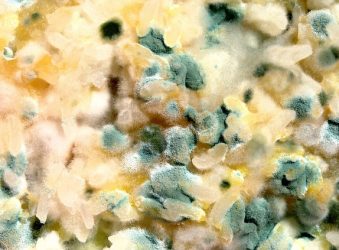
HOW TO PREVENT MOLD IN CHARLOTTE, NC HOMES
Despite what one might like to believe, there is no such thing as a totally mold-free house. However, that does not mean that one must accept defeat and resign themselves to...
Despite what one might like to believe, there is no such thing as a totally mold-free house. However, that does not mean that one must accept defeat and resign themselves to never having a home where the air is mold-free.
Mold spores exist in every structure. However, by taking some basic precautions and doing standard maintenance, there is much that Charlotte homeowners can do to keep a home mold resistant, and impede mold from growing or spreading. These actions will help you avoid the headache of remediation and repair – not to mention, offset any possible health problems mold might cause.
TIPS FOR PREVENTING MOLD GROWTH OR SPREADING
Although mold is nearly everywhere in a home, this doesn’t mean it’s time to panic. This is because all it takes for mold to be present is to have a surface where moisture and warmth are present. Implementing these actions will keep mold at bay.
- Purifiers – If you are in the build stage of a home, then now is the time to take a major step in preventing mold by installing a whole-house air purifier. Although this approach can add significantly to your build budget, the long-term savings are worth it – especially if any of the residents struggle with a suppressed immune system or allergies. A purifier helps to prevent allergens, dust mites, and mold spores from entering the home.
- Ventilation – Be sure that your HVAC system is set so that is forces allergens and mold spores outside of the home. This process is known as positive ventilation. Talk to an HVAC person to learn what temperature/setting this needs to be for your home.
- Damp-proofing – This is a special waterproofing coating that is applied to the foundation wall that sits below ground. Ideally, this should be applied during the build stage.
- Drainage – With a new Charlotte build, be sure that the home is built and situated so that water runs away from the foundation. If your home has already been built and you discover that water is draining into your basement or underneath the house talk to a landscaper about designing your yard so that water flows away from the home.
- Dehumidifiers and Fans – These can be used to reduce humidity by as much as 30-50%; when combined with fans you can increase the air flow which keeps moisture content lower and less inviting for mold spores.
- Open Up – Open closet doors and doors between rooms, move furniture away from walls, and don’t fill corners of rooms with furniture or other items, thus allowing air to flow better.
- Clean Up – Take time in spring and fall to clean out the gutters so water can’t build up and seep into building materials where mold can grow. You should also regularly clean and maintain AC unit drip pans and drainage lines.
- Vacuum – Clean carpet means no food source where mold can seep down into the surface below, thus ‘starving’ any mold spores.
- Barriers – Ensure that your home’s vapor barrier, if you have one, is in good shape. Replace if necessary. It is important that a vapor barrier be properly placed as if installed incorrectly it can actually create structural problems and cause mold. A Sherrill Structural Repair person can make this assessment.
While mold might be a part of nature, it doesn’t have to be a part of your living space. Use these tips to keep it from being a hazard to your home and health. Have Questions? Give the Sherrill Structural Repair team a call today.



